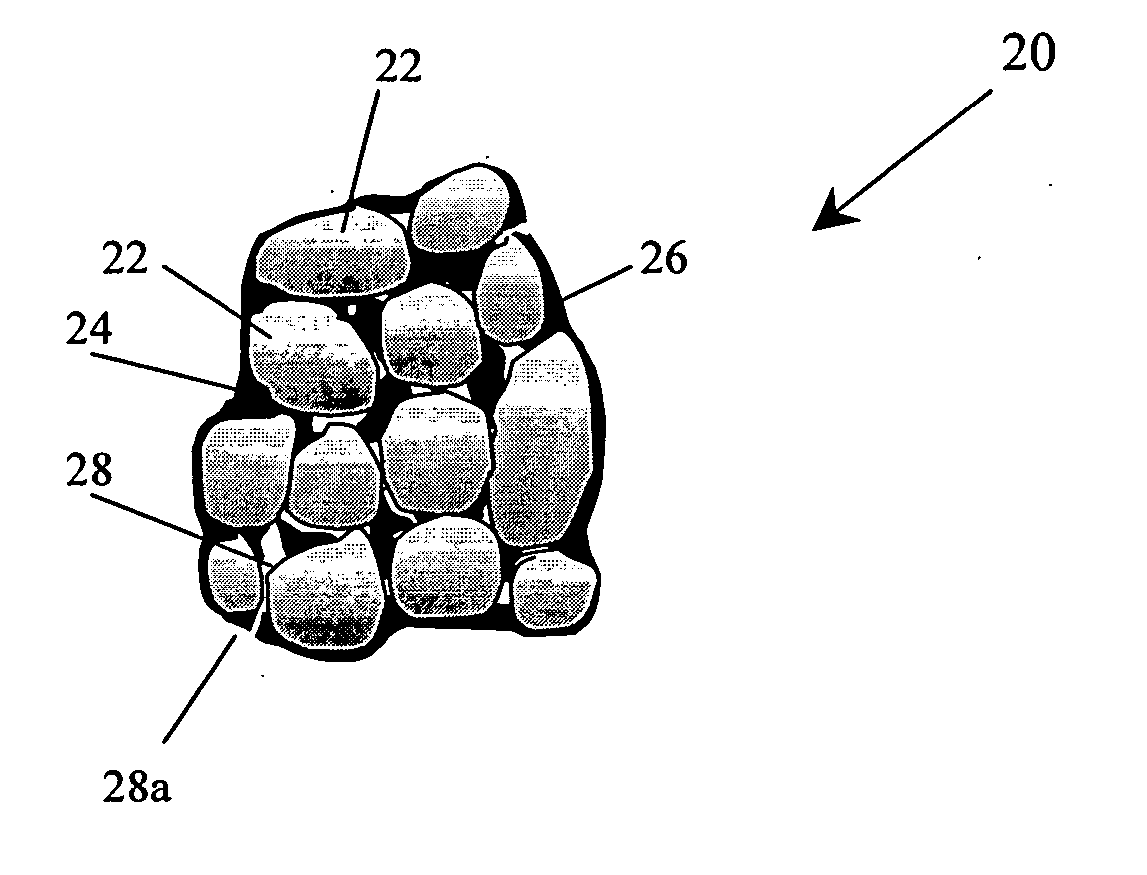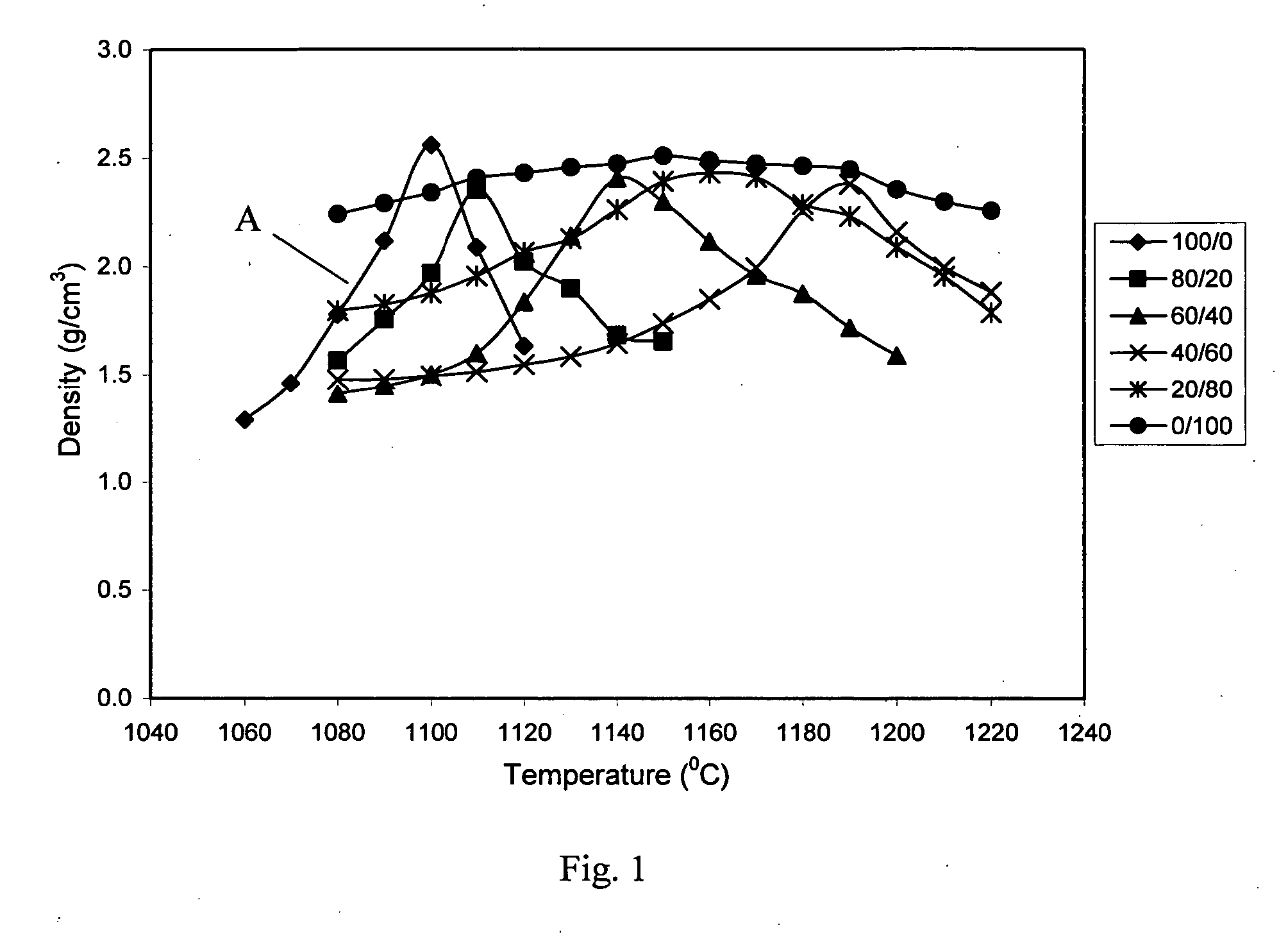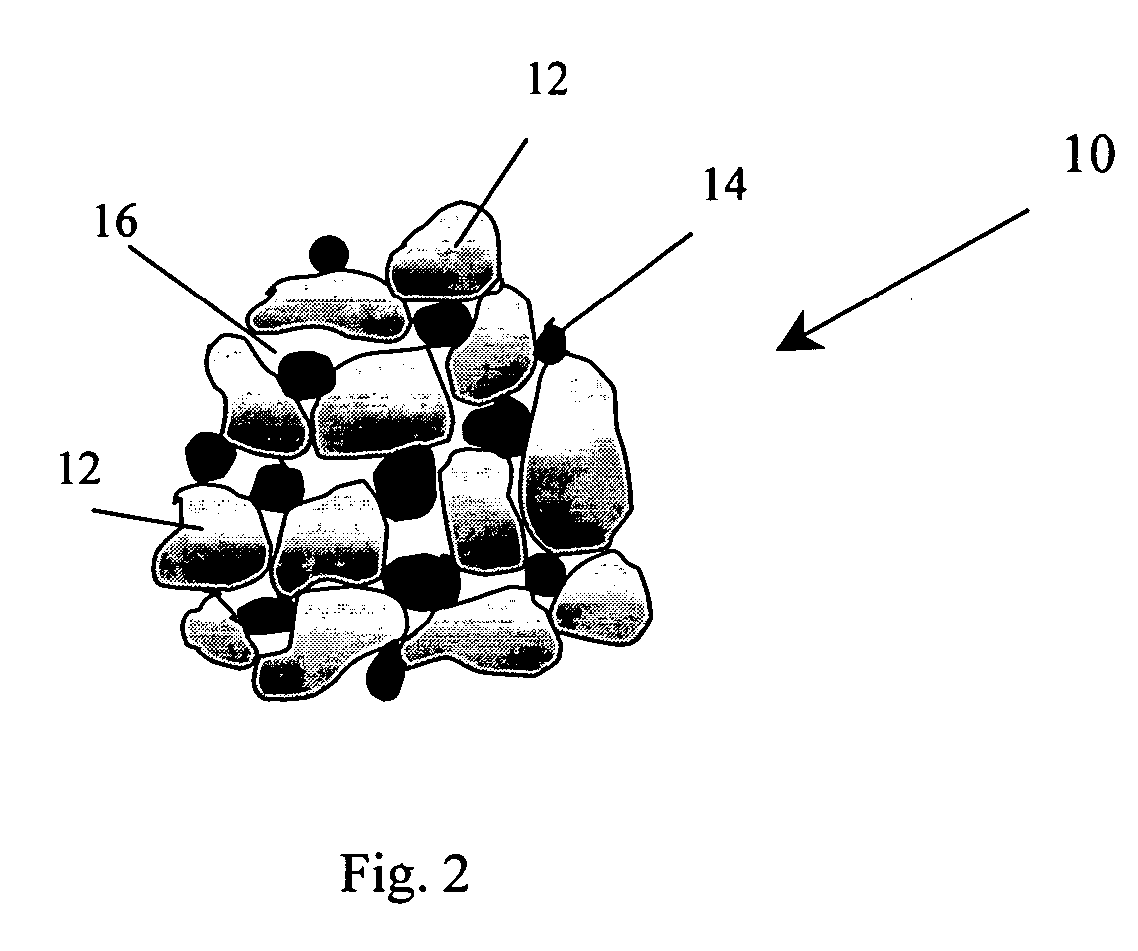Pyroprocessed aggregates comprising IBA and PFA and methods for producing such aggregates
a technology of pyroprocessed aggregates and aggregates, which is applied in the direction of sustainable waste treatment, solid waste management, pigmentation treatment, etc., can solve the problems of difficult pyroprocessing of iba into a product having desired characteristics and unpredictable pyroprocessing behavior, and achieve economic and environmental benefits. substantial and reduce the dependence of iba
- Summary
- Abstract
- Description
- Claims
- Application Information
AI Technical Summary
Benefits of technology
Problems solved by technology
Method used
Image
Examples
example 1
[0062] Prior to receipt for processing into aggregates, the IBA is typically screened to separate large objects or strand-like materials. Ferrous metals are removed by electromagnets and non-ferrous metals are removed by eddy current separators, for example. The remaining materials are fractionated by size, which may be used for different purposes. The fraction less than about 8 mm was used in these Examples. A larger fraction could also be used, after crushing.
[0063] The average chemical analyses (major oxides) of the IBA and the PFA used in these experiments are shown in Table A, below. Table B, below, shows the minor and trace constituents present in both materials. The major crystalline phases in IBA were quartz (SiO2), calcite (CaCO3), and lower amounts of hematite (Fe2O3). In PFA, the major crystalline phases were quartz (SiO2) and mullite (Al6Si2O13). Table C shows the chemical composition of one example of a sintered LWA in accordance with an embodiment. The low calcium con...
example 2
[0099] The same processing methodology used with Example 1 (the process of FIG. 8) was used for mixes of IBA with PFA and an organic material, which in this example was activated carbon waste (ACW), to increase porosity, yielding lower weight, lower density aggregates. The composition of the IBA and the PFA used in Example 2 is the same as that used in Example 1. The same equipment used in Example 1 is used here.
[0100] Table L, below, shows the particle size distribution data of as-received ACW. The material has a mean particle size diameter of 95.31 microns. The ACW showed a wide particle size distribution, with 95% of its volume (d95 value) comprising particles finer than 347 microns. The particle size distribution decreased with milling for both raw IBA and PFA, as shown in FIG. 10.
TABLE LPARTICLE SIZE DISTRIBUTION OF AS-RECEIVED ACWSize (microns)Volume % as-received carbon95346.870134.25047.9259.2105.3
[0101] The effect of ACW on the physical properties of PFA / IBA sintered pel...
PUM
| Property | Measurement | Unit |
|---|---|---|
| diameter | aaaaa | aaaaa |
| relative density | aaaaa | aaaaa |
| temperature | aaaaa | aaaaa |
Abstract
Description
Claims
Application Information
 Login to View More
Login to View More - R&D
- Intellectual Property
- Life Sciences
- Materials
- Tech Scout
- Unparalleled Data Quality
- Higher Quality Content
- 60% Fewer Hallucinations
Browse by: Latest US Patents, China's latest patents, Technical Efficacy Thesaurus, Application Domain, Technology Topic, Popular Technical Reports.
© 2025 PatSnap. All rights reserved.Legal|Privacy policy|Modern Slavery Act Transparency Statement|Sitemap|About US| Contact US: help@patsnap.com



